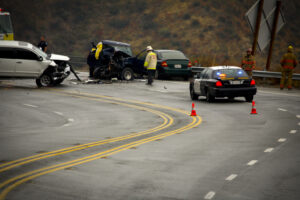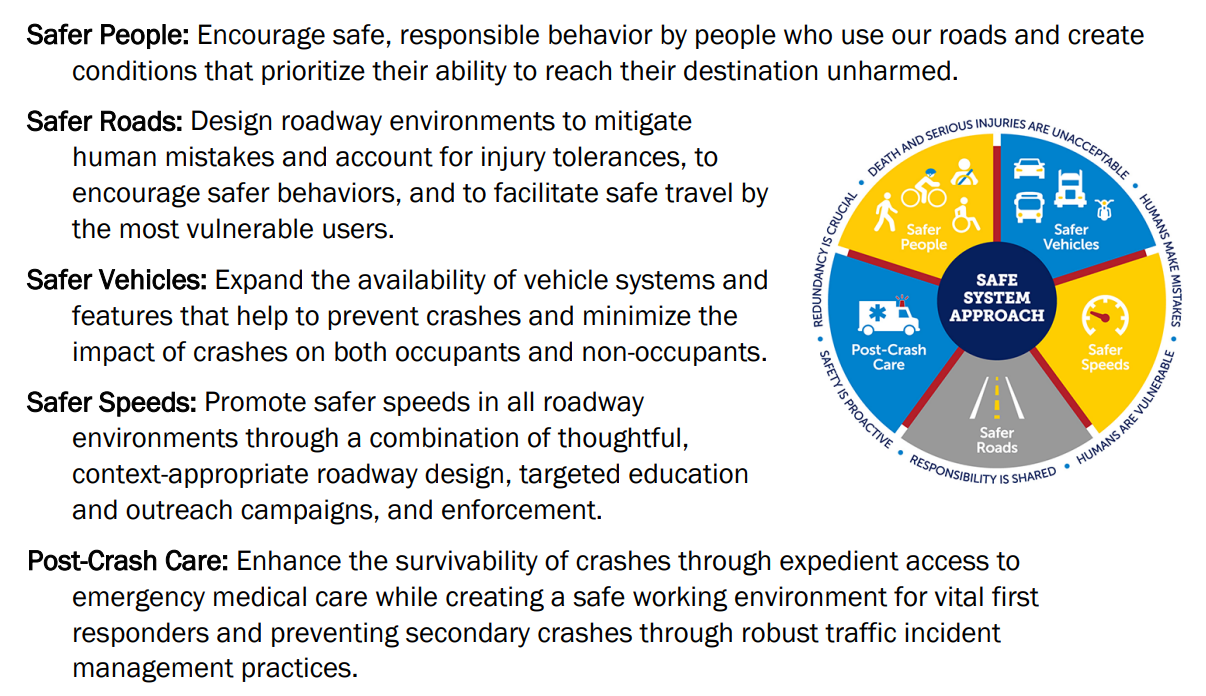
USDOT, public & private sectors continue work on zero traffic death strategy, grant opportunities available
By onAnnouncements
Twenty-five additional organizations and businesses have committed to the U.S. Department of Transportation (USDOT)’s National Roadway Safety Strategy (NRSS), becoming “Allies in Action,” to curb crisis-level road deaths in the U.S., including better post-crash care.
USDOT says another sign of strong interest in advancing road safety from communities is the nearly 800 applications it received for funding from the new Safe Streets and Roads for All (SS4A) competitive grant program. The program helps communities plan and construct safer streets. Award recipients are expected to be announced later in the year.
For collision repair professionals, it comes down to following OEM repair procedures and position statements to safely and properly repair vehicles, including recalibrations and verification of them.
The NRSS was released by USDOT in January 2022. It outlines a concrete set of actions USDOT has committed to and adopts a five-pronged “Safe System Approach” — safer people, safer vehicles, safer speeds, safer roads, and better post-crash care — to reduce roadway fatalities.
USDOT’s Allies in Action have committed to taking specific, tangible steps to actively reduce the number of deaths and serious injuries on America’s roads and streets, expand the adoption of a Safe System Approach and a Zero Fatalities vision across the nation, and transform how we as a nation think about road safety. Allies in Action span multiple sectors and include health and safety advocates, the private sector, municipal and law enforcement organizations, and more.
In February, U.S. Transportation Secretary Pete Buttigieg launched a call to action campaign asking the private sector, law enforcement, municipal organizations, health and safety advocates, and OEMs to take specific actions in 2023 to reduce the number of traffic-related deaths, whether as vehicle passengers, pedestrians, motorcyclists, or bicyclists.
That same month, USDOT released an NRSS progress report in which it said an estimated 42,915 lives were lost on U.S. roads in 2021, an increase of over 10% compared to 2020. At that time, early estimates for the first nine months of 2022 indicated deaths would remain near those levels in 2022, while getting worse for incidents involving trucks as well as people walking, biking, or rolling.
In a video shared by USDOT, Buttigieg said, “Crashes kill as many people in America as gun violence and yet road safety gets less attention than so many other transportation issues. When we do think of it, we too often think of it as inevitable; as if it were a painful fact of life but these road deaths are not inevitable and every one of us has the power to do something about them.”
USDOT says it will help improve emergency response by providing first responder training on how to safely manage the scene of a crash and provide a safe environment for all involved, including passerby. The department believes it is crucial to clear scenes quickly for the sake of safety as up to 20% of crashes are estimated to be secondary in nature, meaning that they occur as the result of an earlier incident. The department estimates the likelihood of a secondary crash occurring increases by 2.8% for every minute the primary crash obstructs a travel lane or poses another type of hazard, according to the NRSS.
The department plans to prioritize shortening ambulance response times and improving the quality of emergency medical services (EMS) data.
Another key part of the NRSS is to research the effectiveness and benefits of trailer and semitrailer side underride guards. The guards are designed to absorb energy and prevent a passenger vehicle involved in a crash with a large truck or trailer from sliding under the impacted trailer, which causes severe injuries and fatalities.
New voluntary commitments from Allies in Action include:
-
- San Diego Association of Governments (SANDAG) will develop the first Regional Vision Zero Action Plan for the San Diego region’s 19 jurisdictions, 17 federally recognized tribes, and over 3.3 million people (42% historically underserved) to define a high injury network and highlight near-term, high impact strategies including “quick build” infrastructure options, safety project selection and funding prioritization recommendations, innovative public outreach, and an interactive safety-data dashboard to monitor progress of all three plans;
- Qualcomm will continue to develop technologies in their Snapdragon Digital Chassis solution to help make travel safer and more convenient for road users, including advanced driver assistance systems (ADAS) that can sense their surroundings and cellular-vehicle-to-everything (C-V2X) technology. Qualcomm says it will support industry stakeholders with deployments, focusing on Day 1 use cases that will have an immediate safety impact. Qualcomm will also continue collaborating on solutions that increase awareness for vulnerable road users, helping to protect pedestrians, cyclists, road workers, school children and other people who share the road with vehicles. Lastly, Qualcomm will continue to provide engineering guidance to support interoperable C-V2X system development;
- Massachusetts Bay Transportation Authority (MBTA) will support safer people by conducting monthly Bus Accident Reduction Committee meetings to review safety performance indicators and targets, investigate findings, and develop corrective action plans and expand training requirements. In 2023, MBTA will implement a Bus Operator Recertification Course that is required of all Operators every two years. MBTA will support safer roads through their 2023 Bus Network Redesign proposal for bus services, which aim to create more equitable networks with improved service. Lastly, MBTA will support safer vehicles and safer speeds through the integration of new technology that provides Advanced Driver Alerts and technology that monitors driver behavior, speed, and harsh braking events; and
- Together for Safer Roads (TSR) says its dedicated to bringing the public and private sectors together in shared partnerships to create safer operators and systems. In 2023, the efforts will include recruiting new fleets for TSR’s Focus on Fleet Safety — a workforce development program for small- to mid-sized fleets. TSR will also pilot their Truck of the Future initiative developed to increase 360-degree driver visibility among fleet operators. TSR will also launch their Direct Vision Rating System in partnership with both public and private sector fleets, allowing fleet owners to understand the level of visibility their fleets have and empowering them to retrofit vehicles to improve visibility.
A full list of Allies in Action can be read here.
In July, dozens of Allies in Action gathered at USDOT’s headquarters in Washington, D.C. for a first-ever workshop to share progress, review case studies of notable practices, encourage new commitments, and make connections to meet common safety goals. Areas of discussion included using data to identify opportunities to improve safety, empowering communities, and cross-sector collaboration.
“The Department won’t achieve zero deaths on our roadways alone, which is why involving stakeholders across the country, at every level of government, philanthropy, advocacy and the private sector, is key,” USDOT said in a news release.
In the coming months, USDOT will announce the second round of grant awards from the new Safe Streets and Roads for All discretionary grant program, funded by the Bipartisan Infrastructure Law that President Joe Biden signed into law in November 2021.
The competitive grants are meant to help cities, counties, Tribes and metropolitan planning organizations (MPOs) create safety plans, demonstrate effective strategies, and construct safety projects that prevent deaths and serious injuries on U.S. roadways from putting in high-visibility crosswalks to redesigning intersections and more.
In the first round of funding, USDOT was able to award funding to 511 projects.
Images
Featured image credit: eyecrave productions/iStock
Secondary image provided by USDOT

